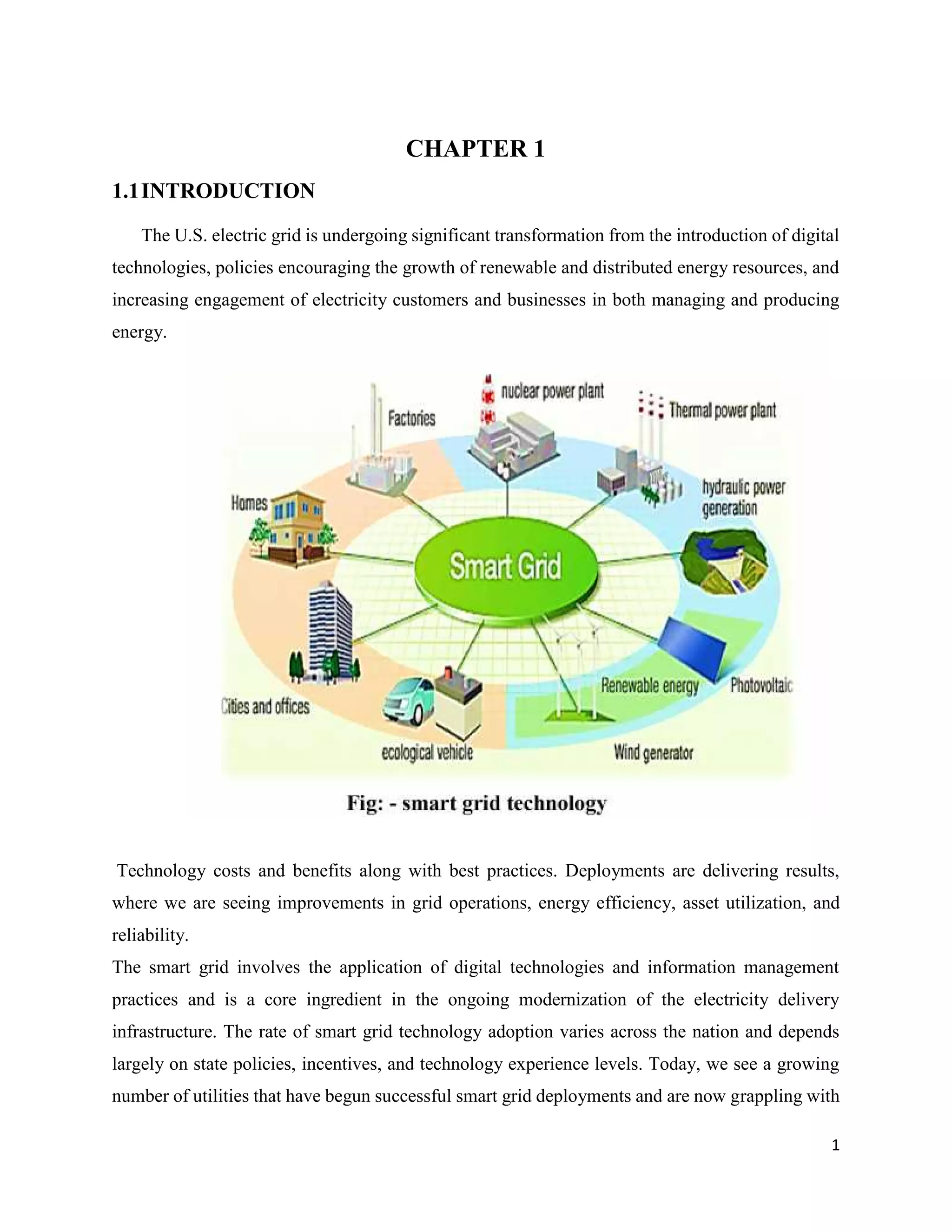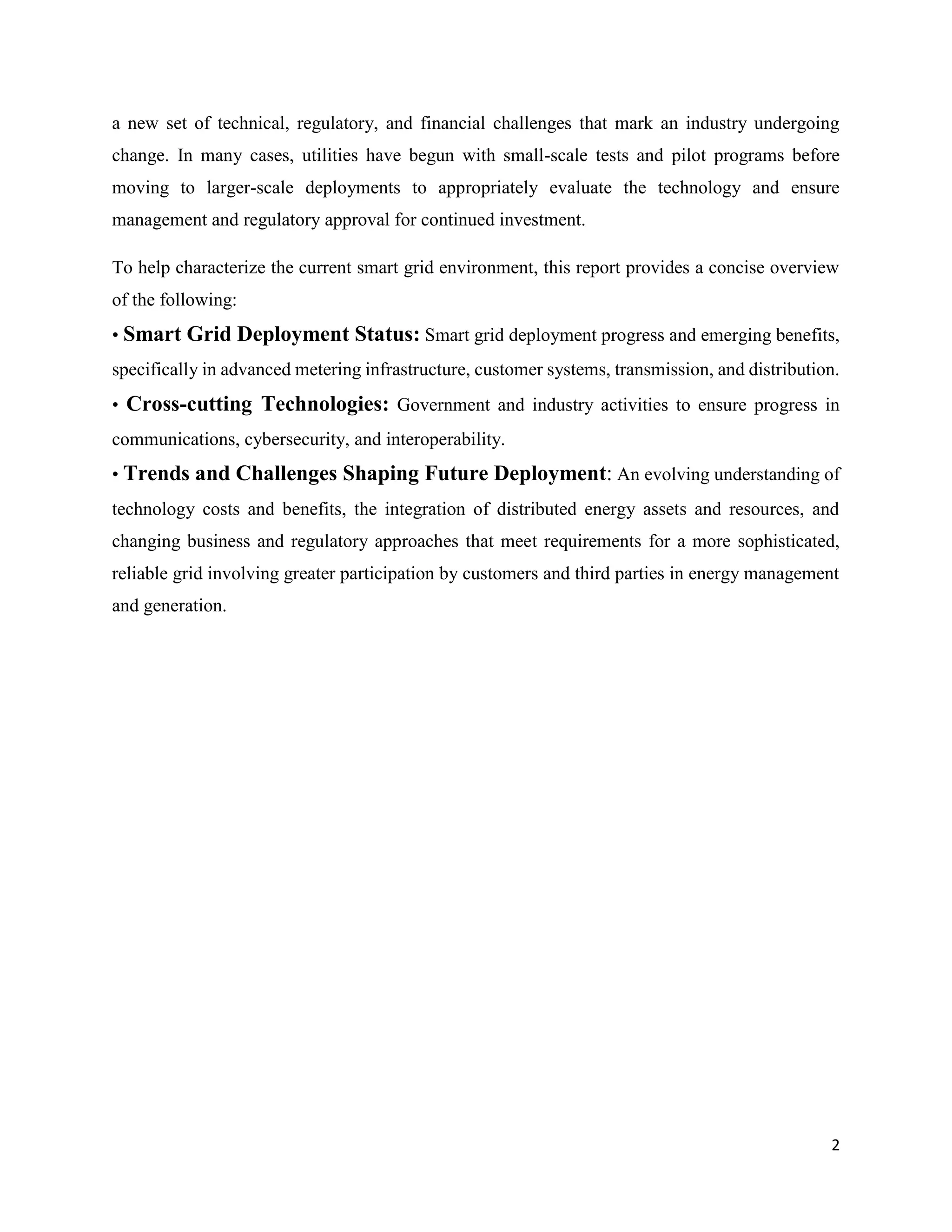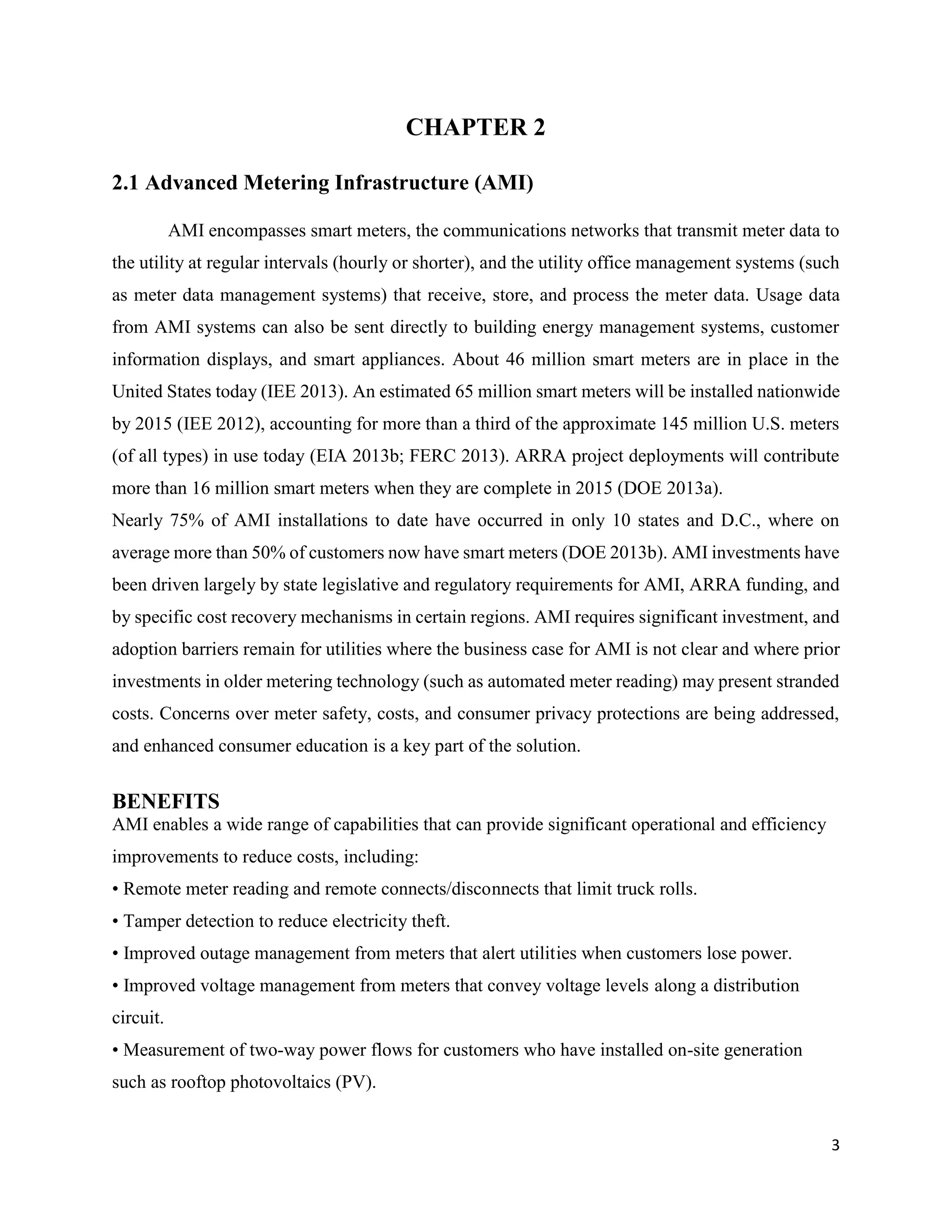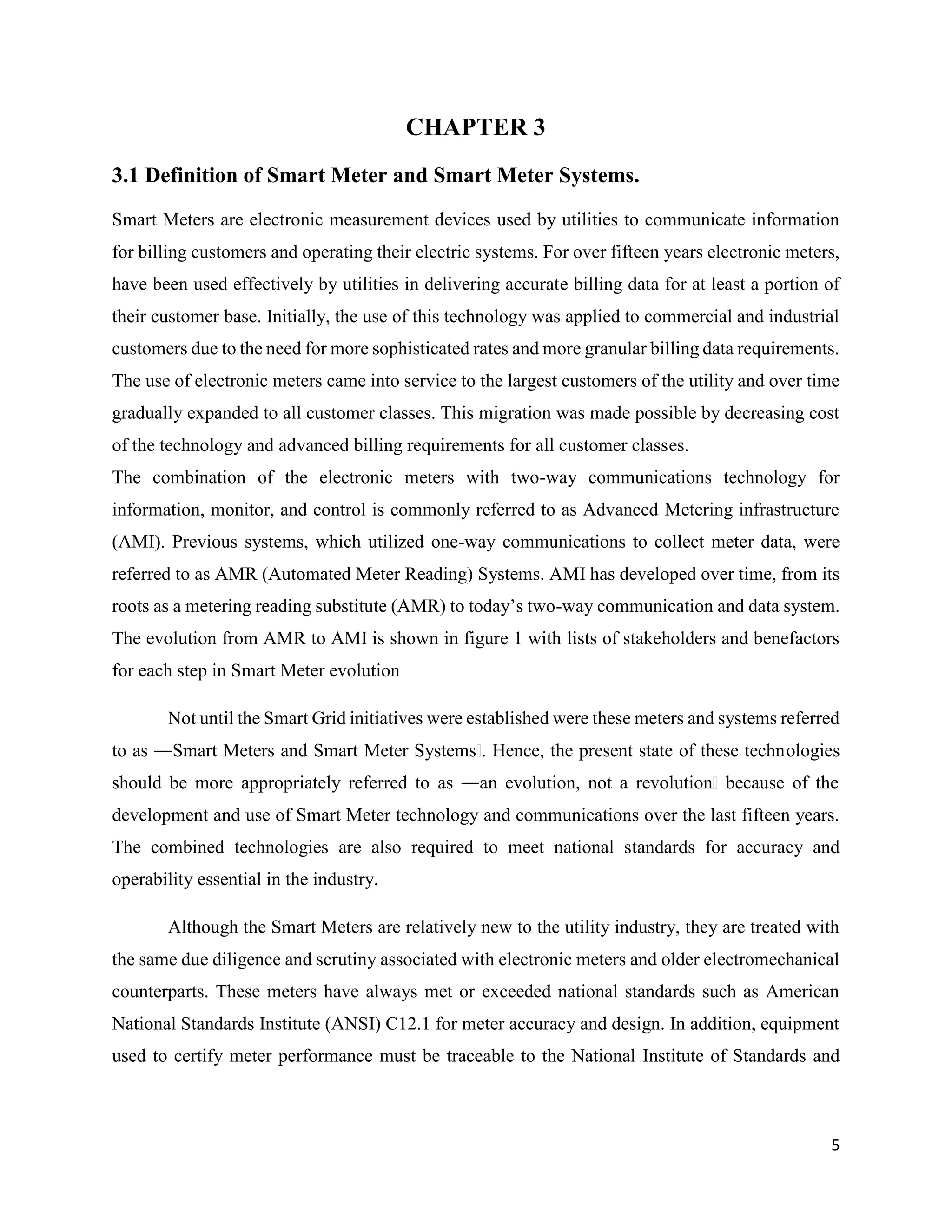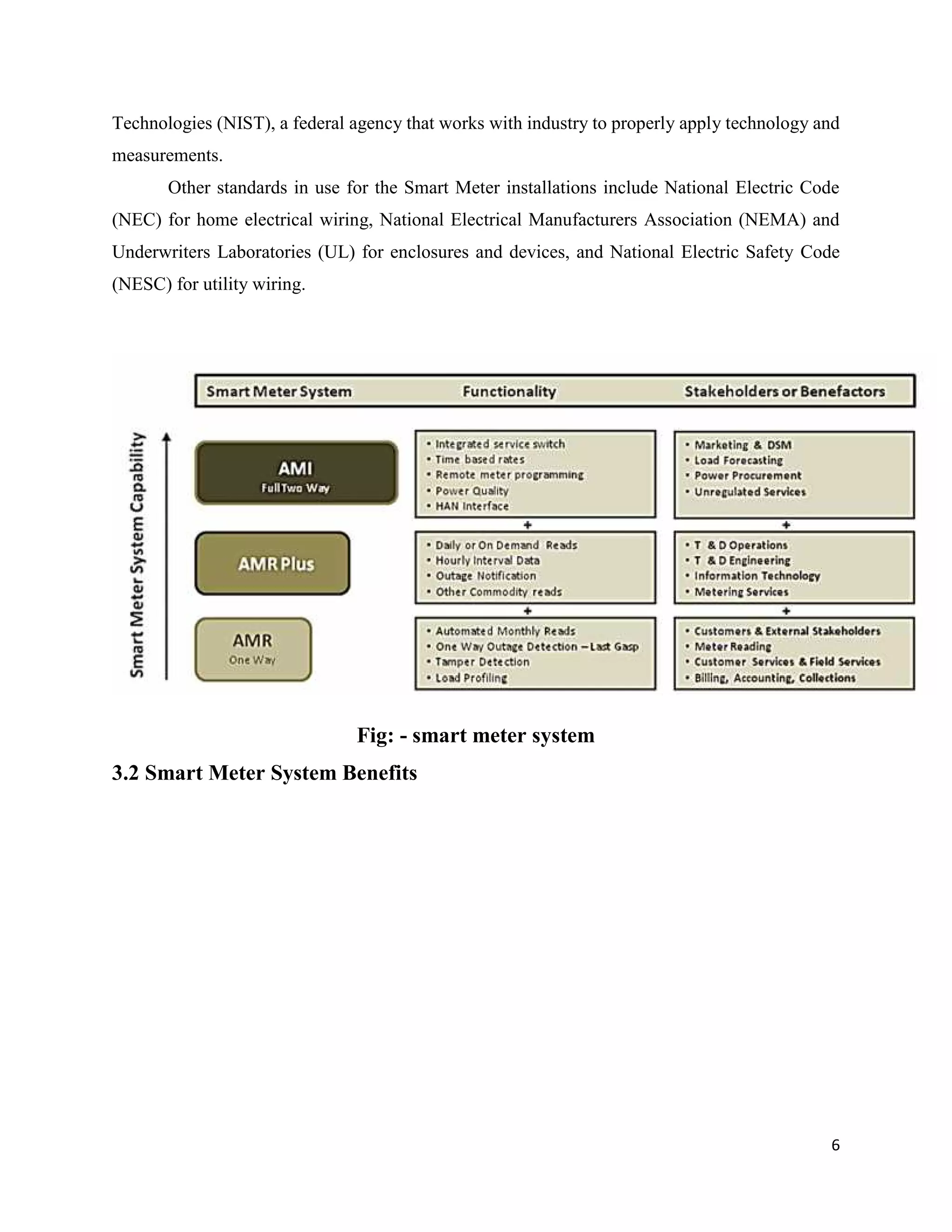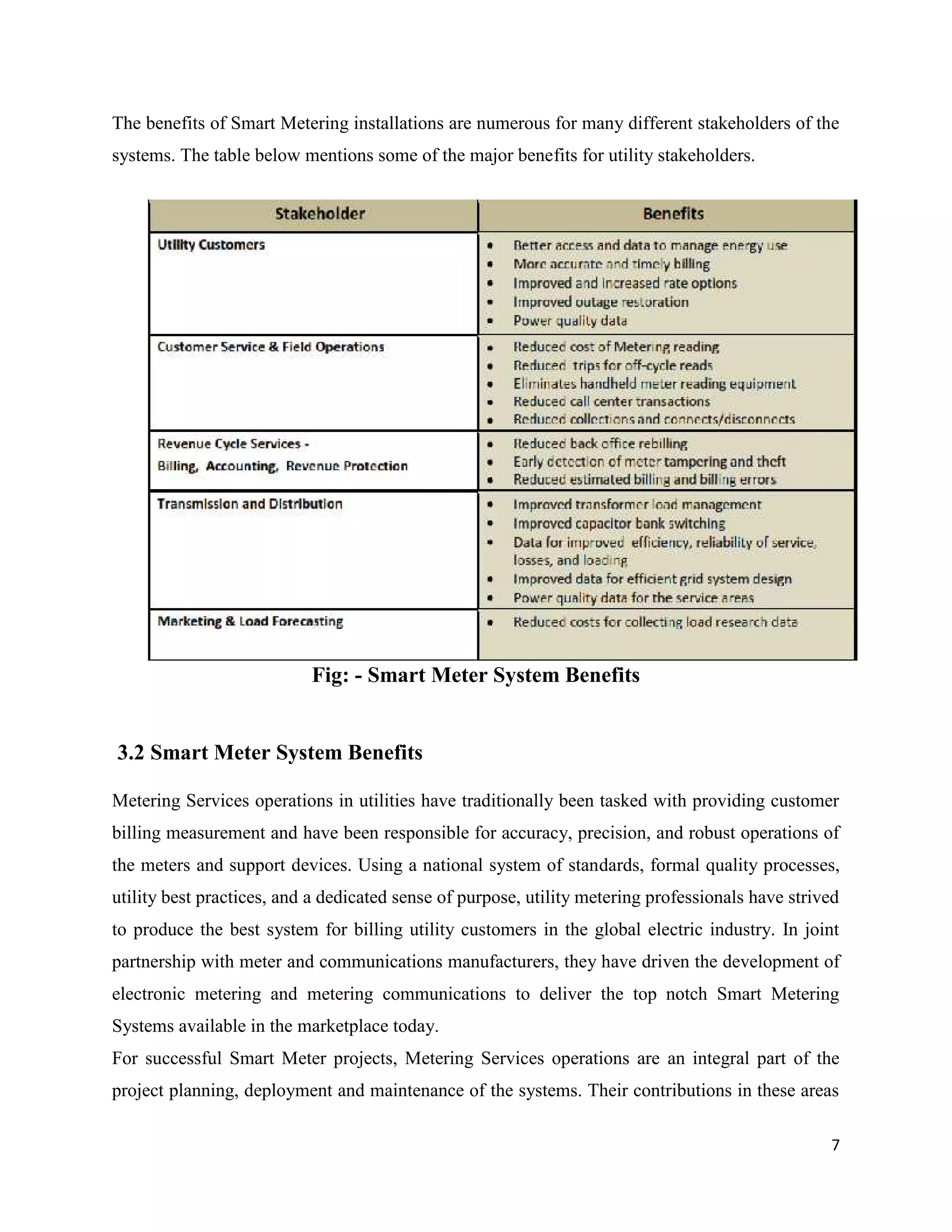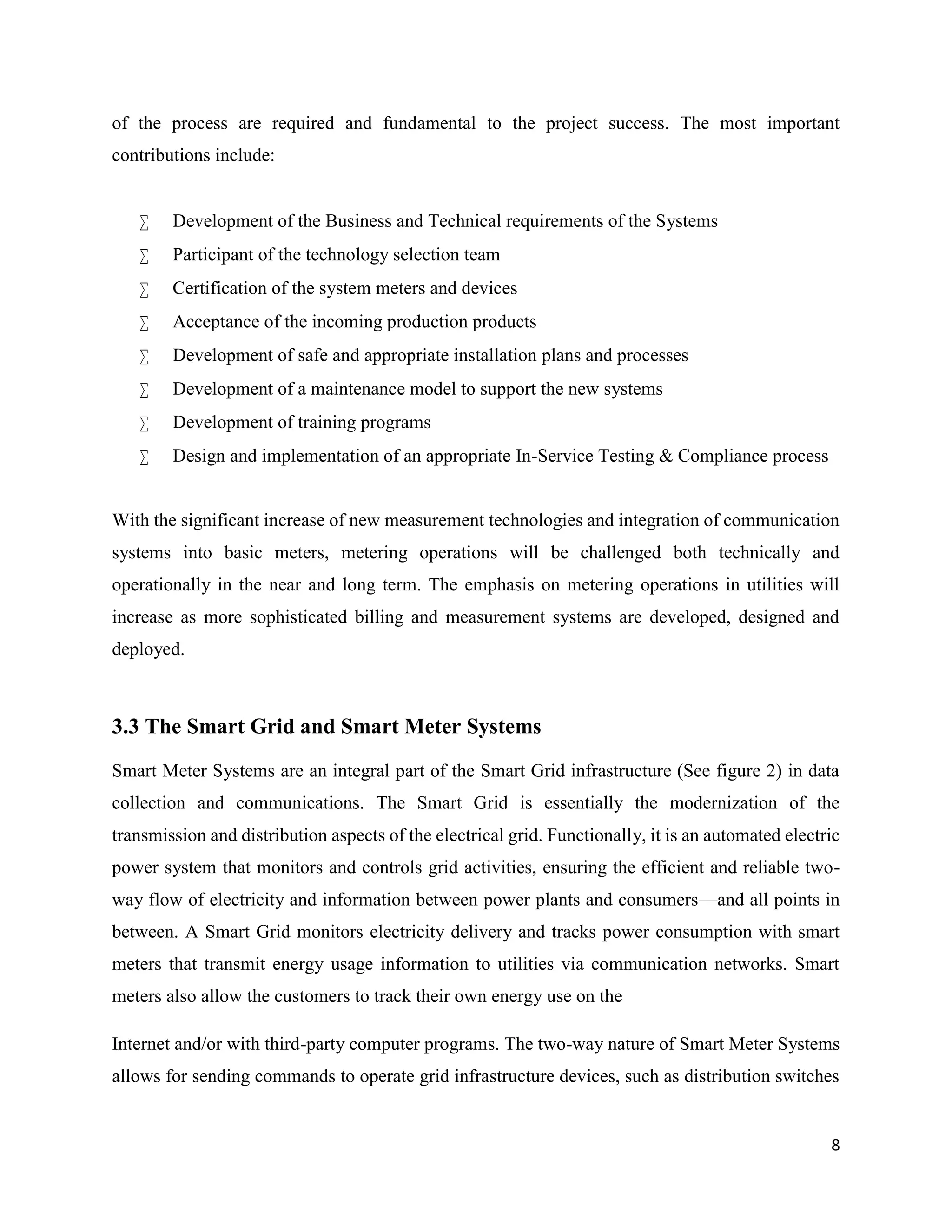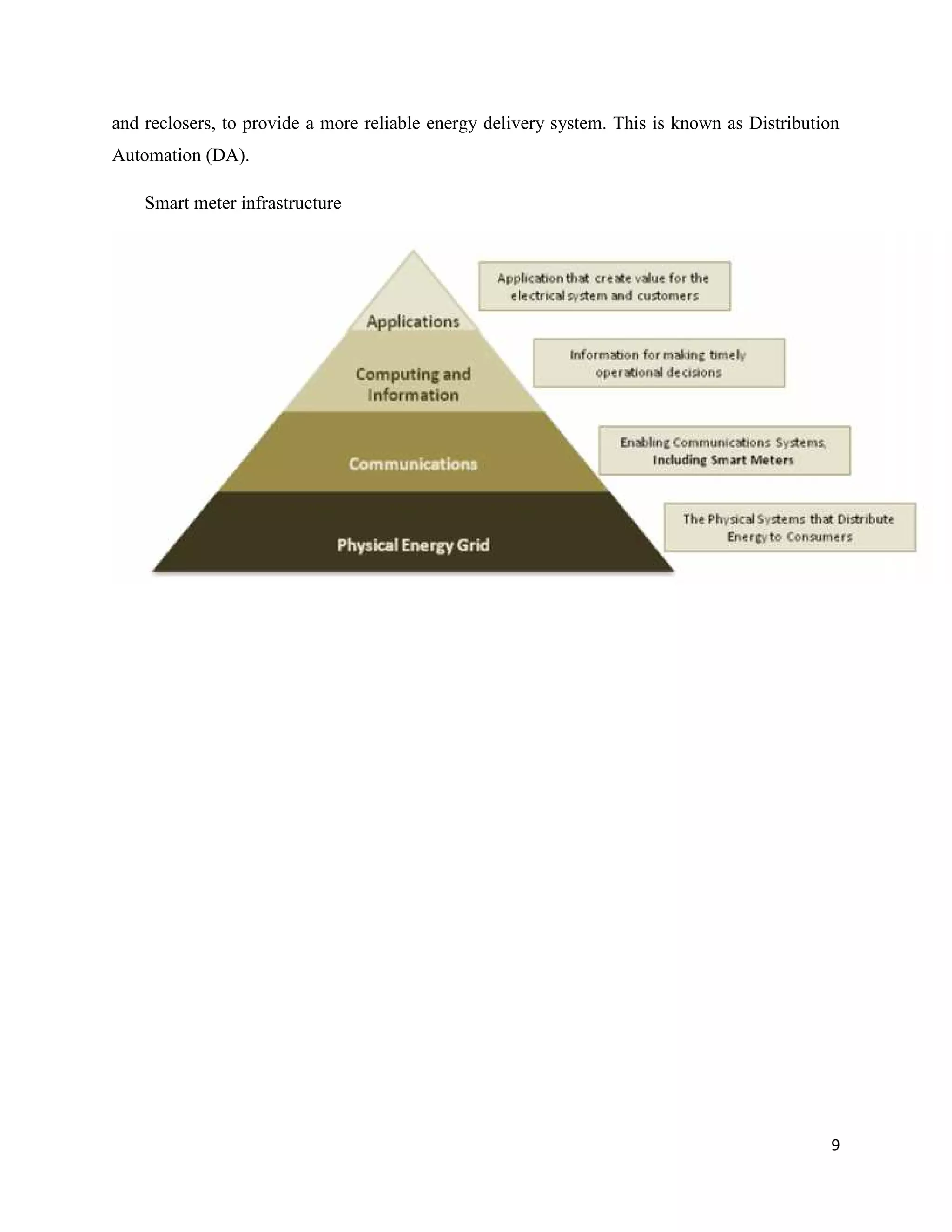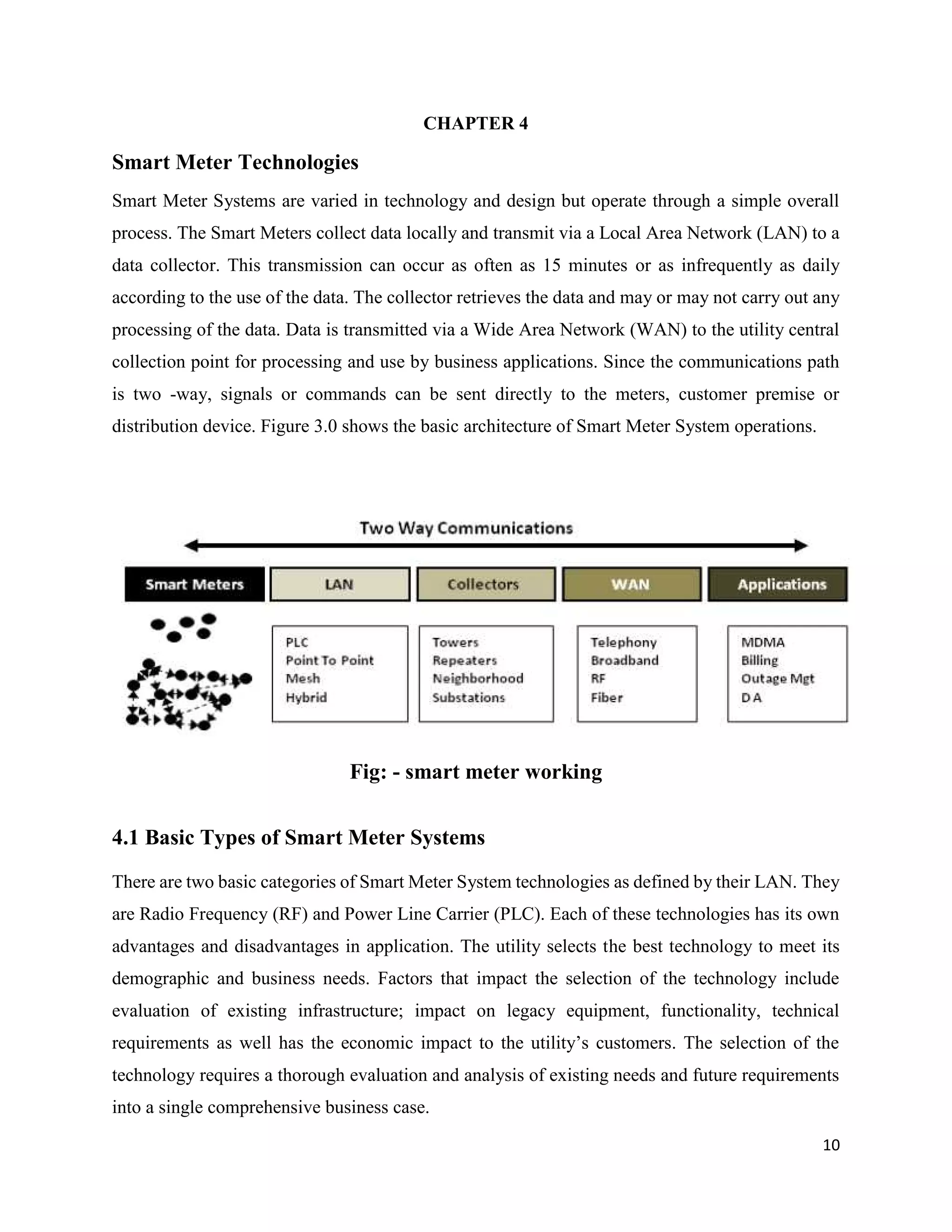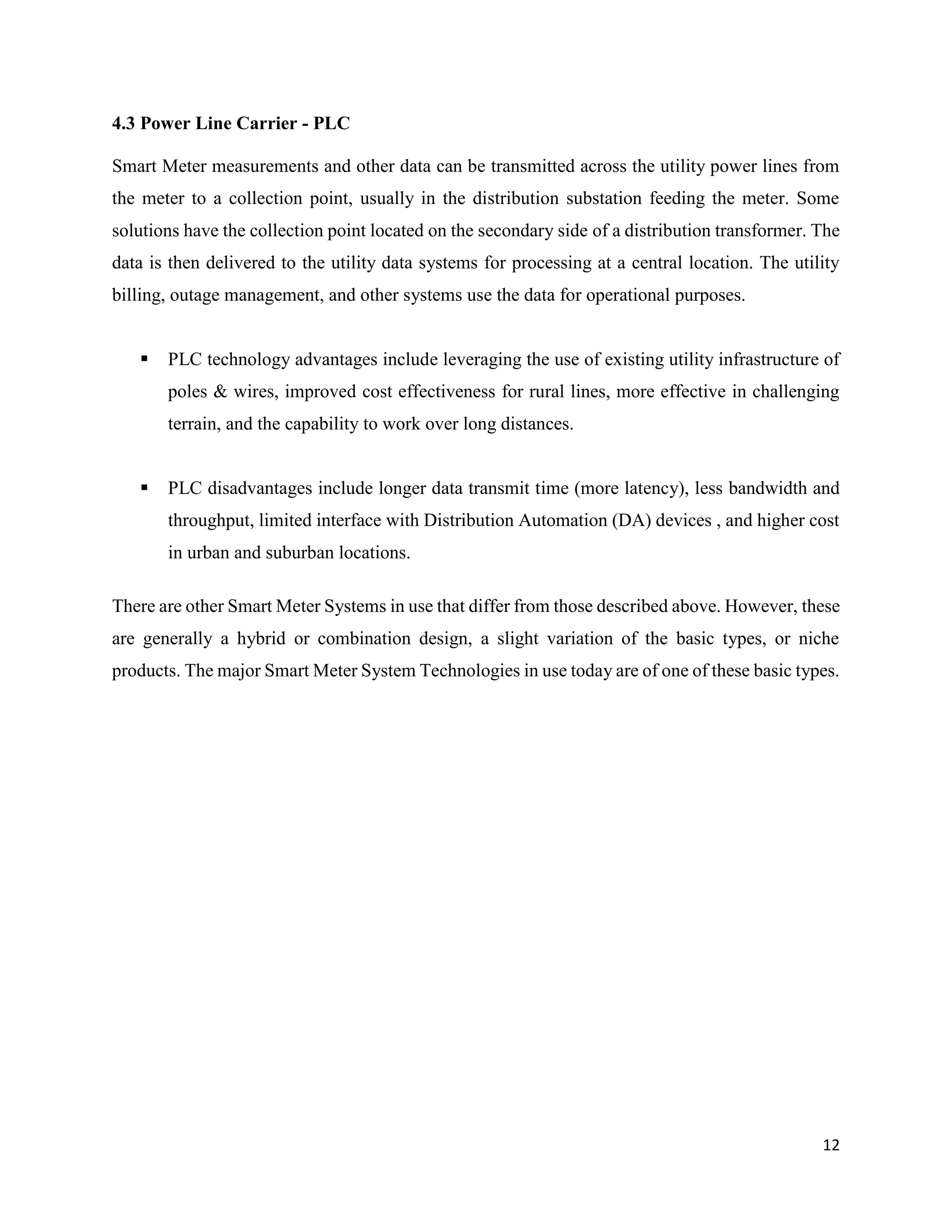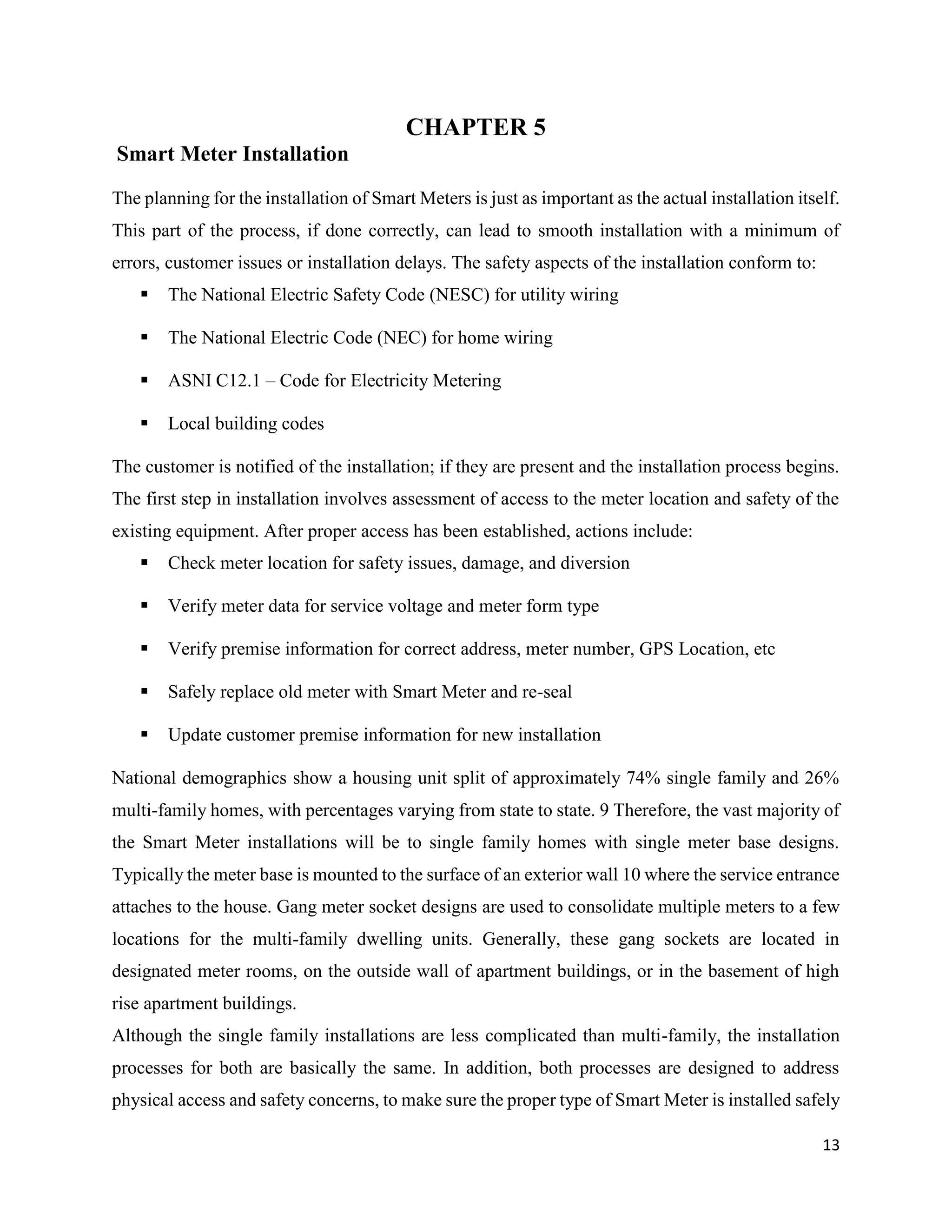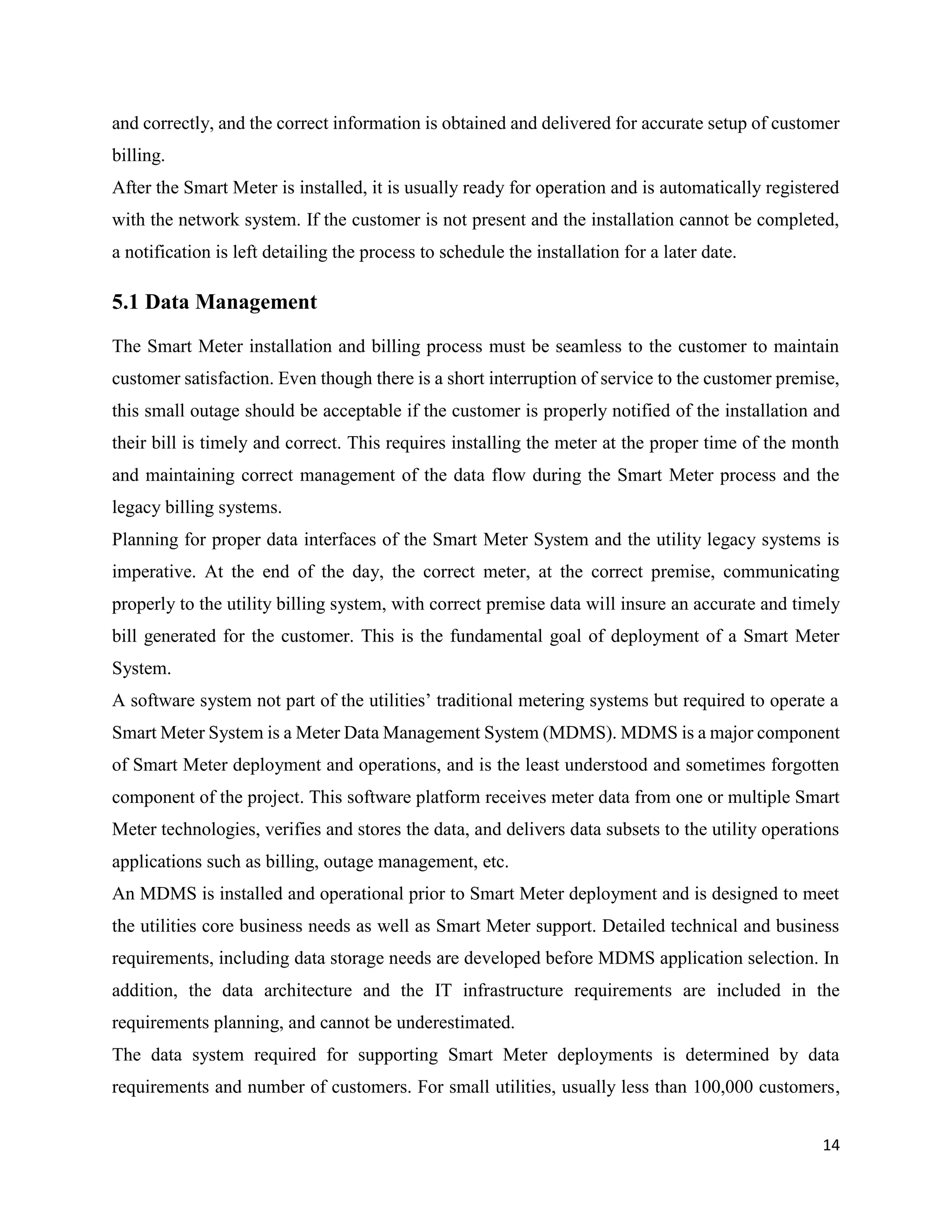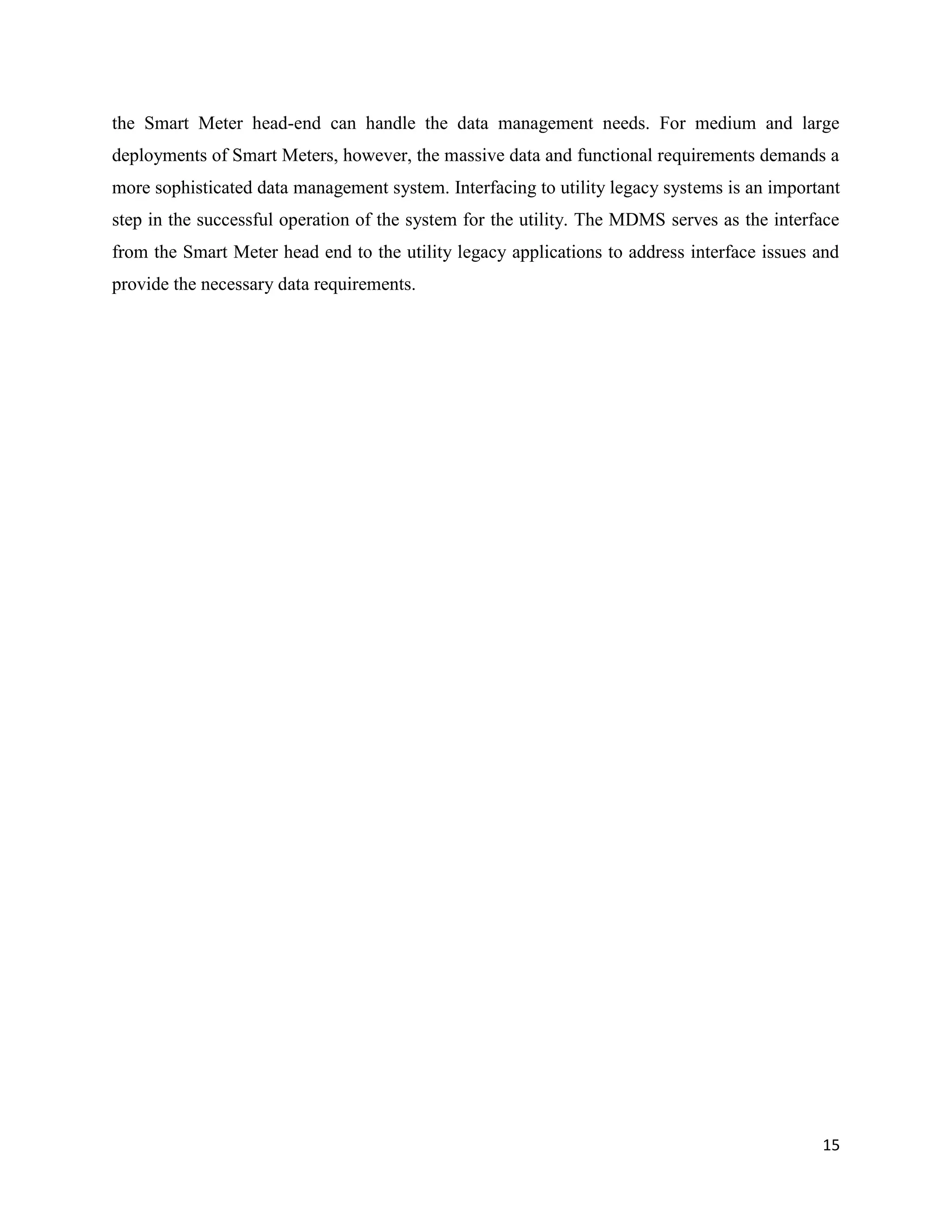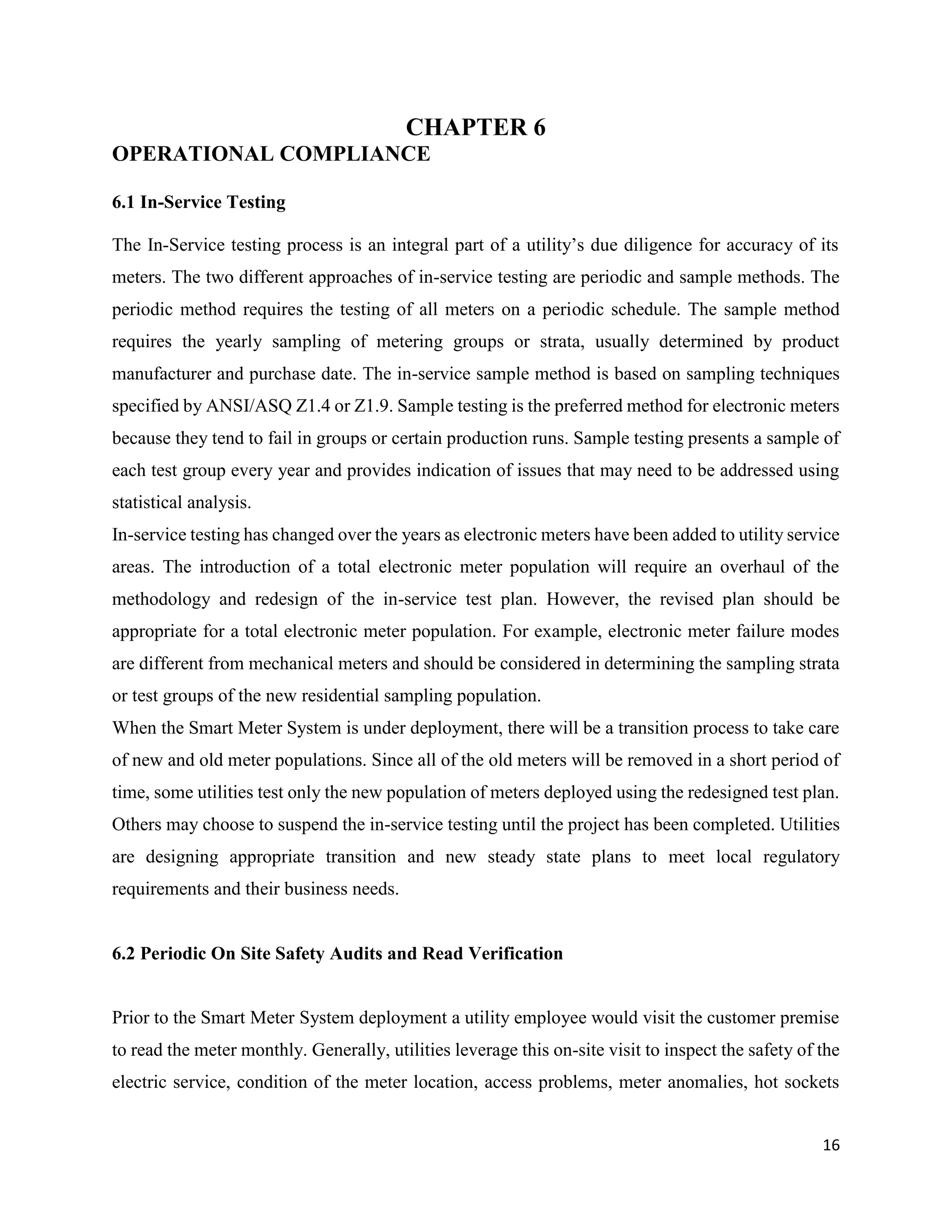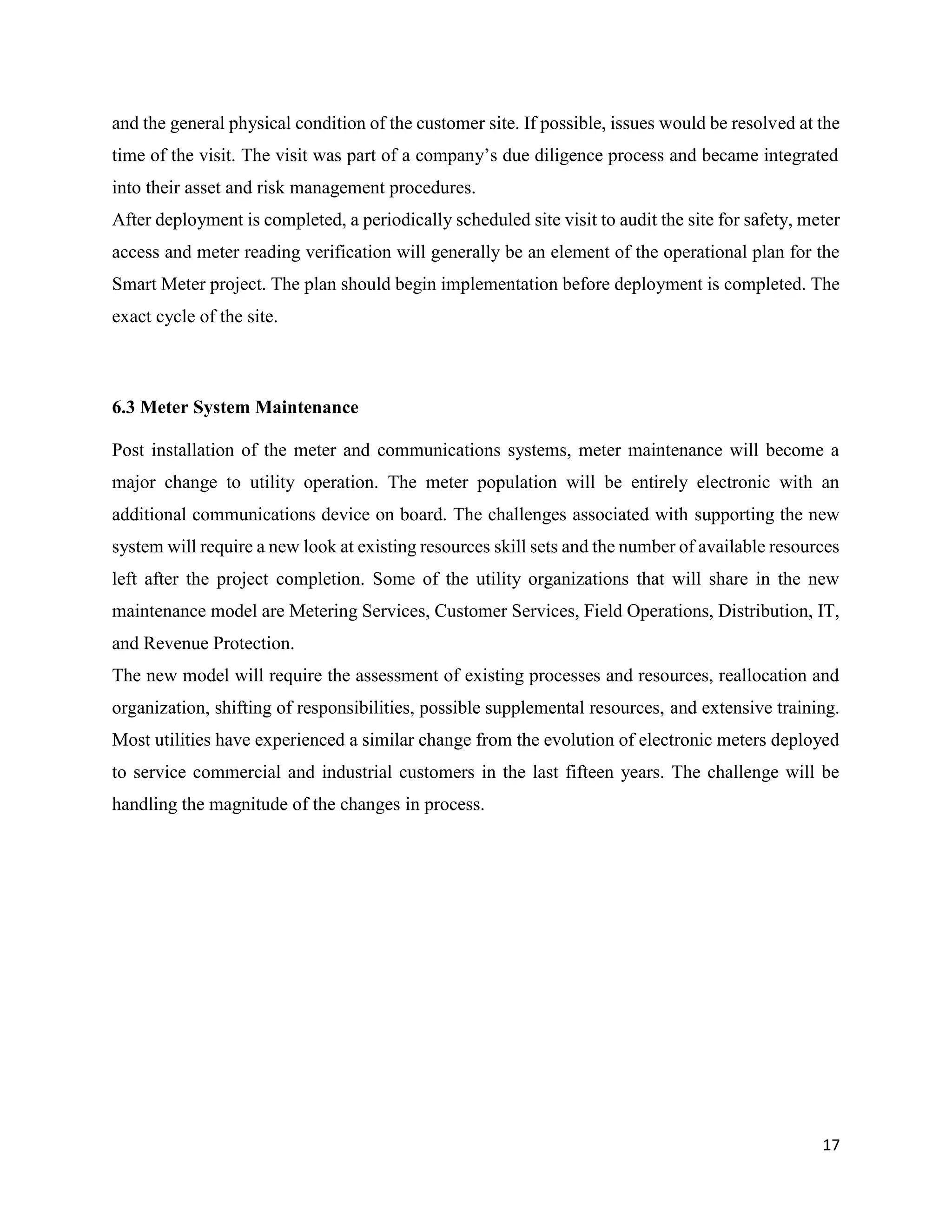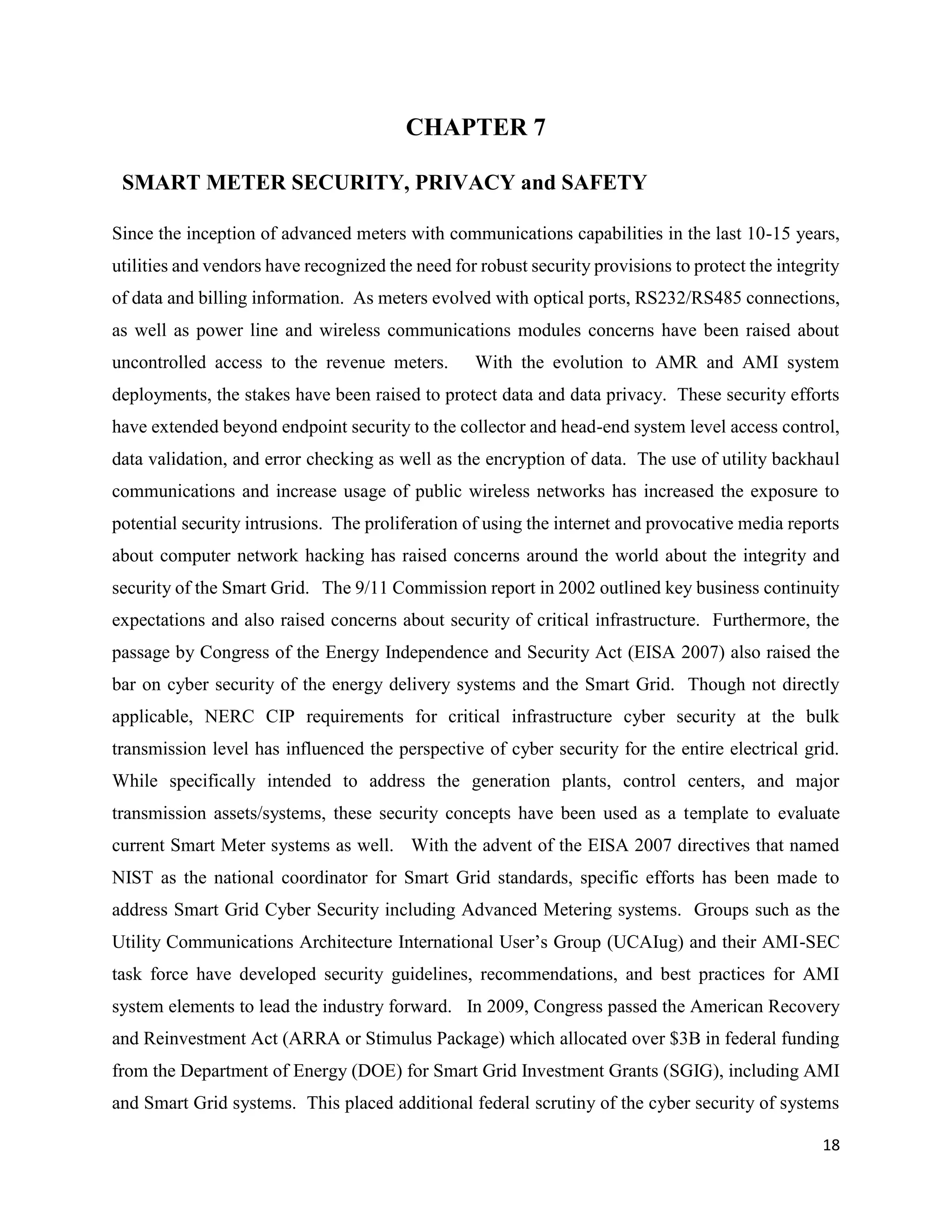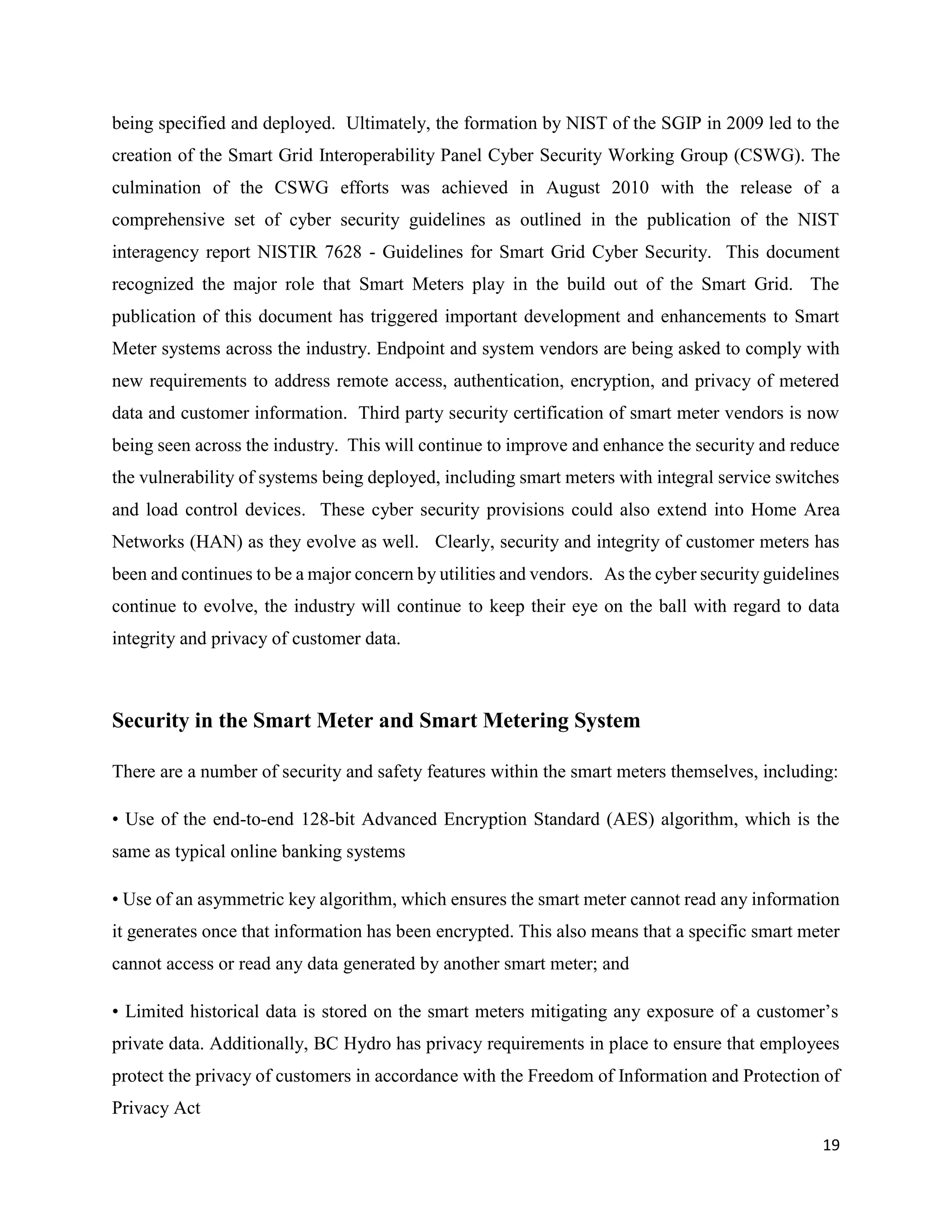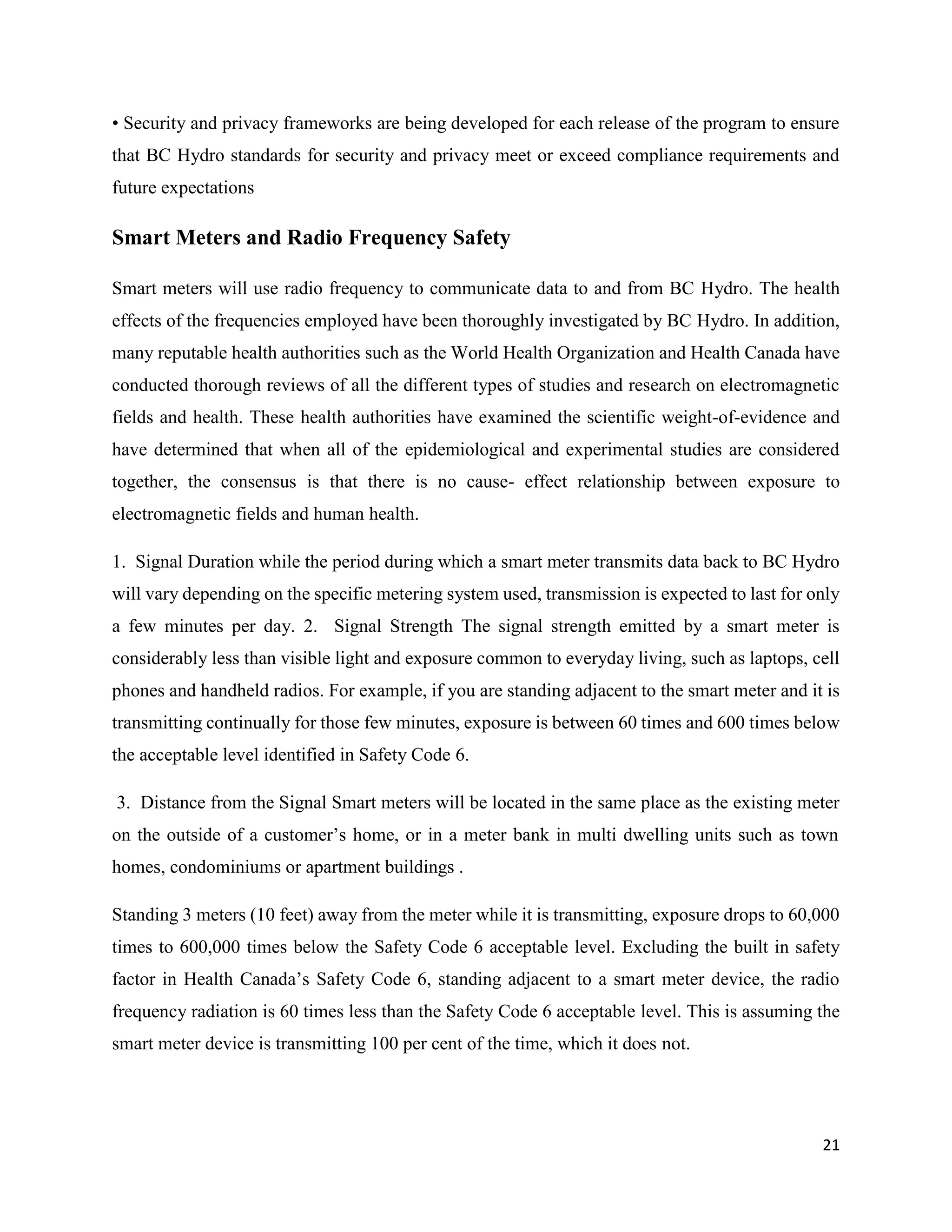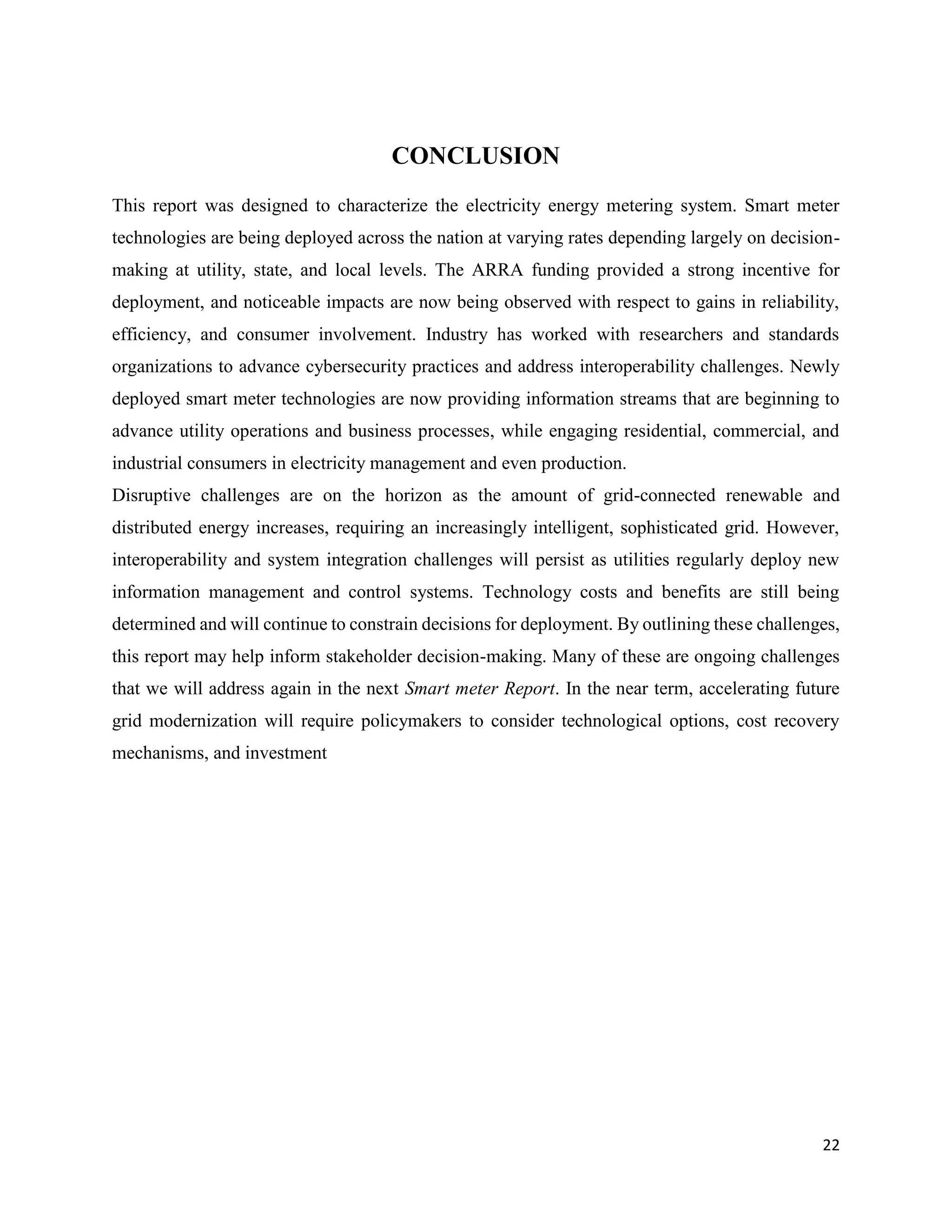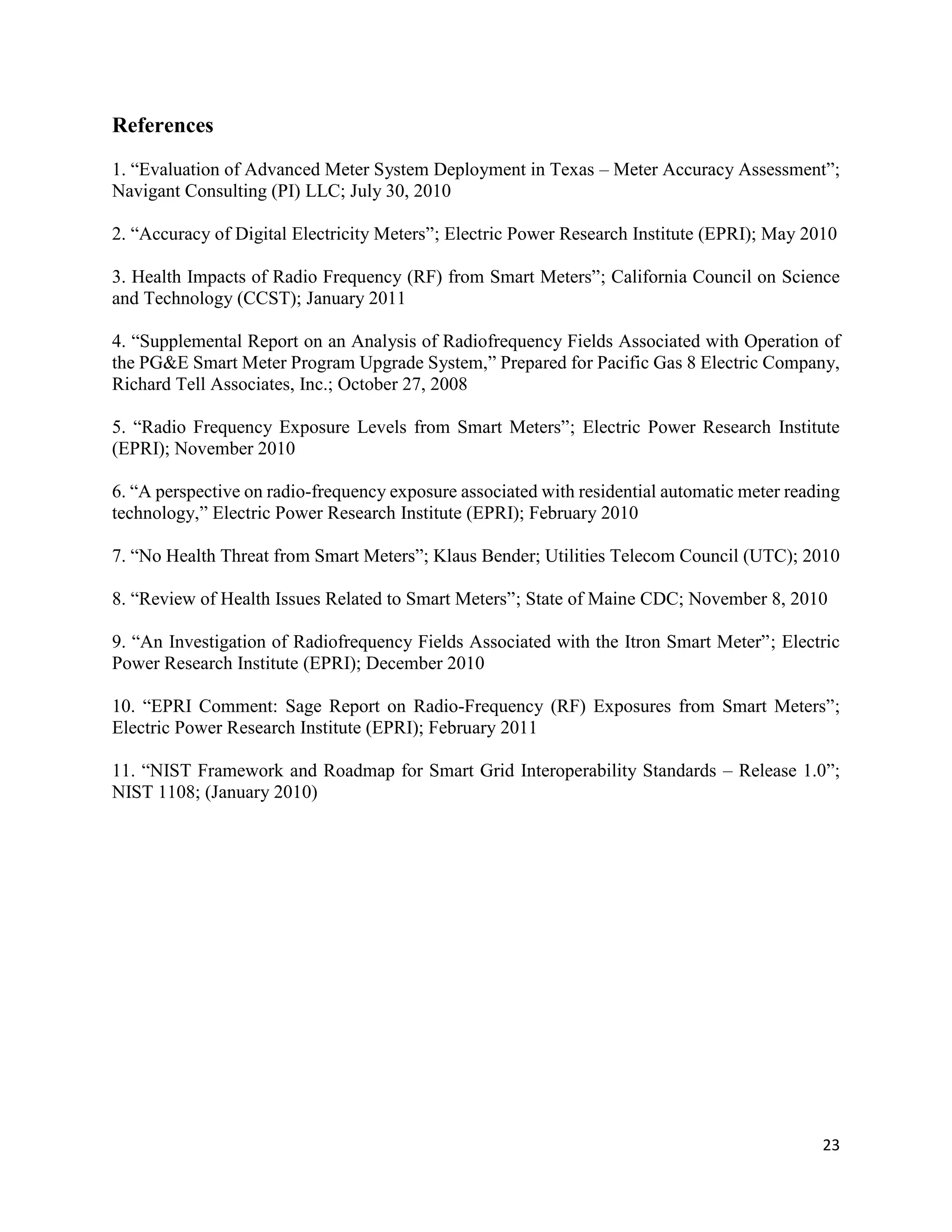This document provides an overview of smart grid deployment in the United States, including smart meter infrastructure and benefits. It discusses the status of smart meter deployments across the country, with 46 million smart meters installed so far and a goal of 65 million by 2015. Nearly 75% of smart meters have been installed in 10 states that have driven adoption through policies, incentives and experience. Smart meters provide benefits like remote meter reading, outage detection, and voltage management. The document also defines smart meters and meter systems, outlining the evolution from automated meter reading to advanced metering infrastructure. Key benefits for utilities include reduced costs from limited truck rolls and improved outage management. Metering operations play an important role in smart grid projects.
